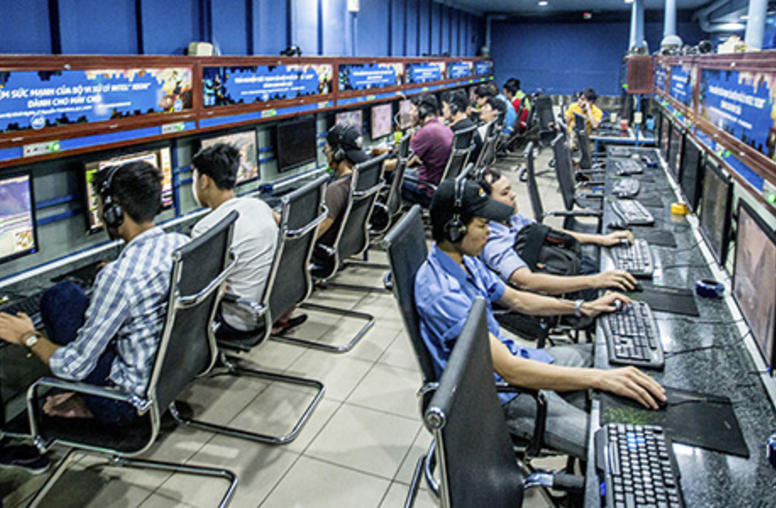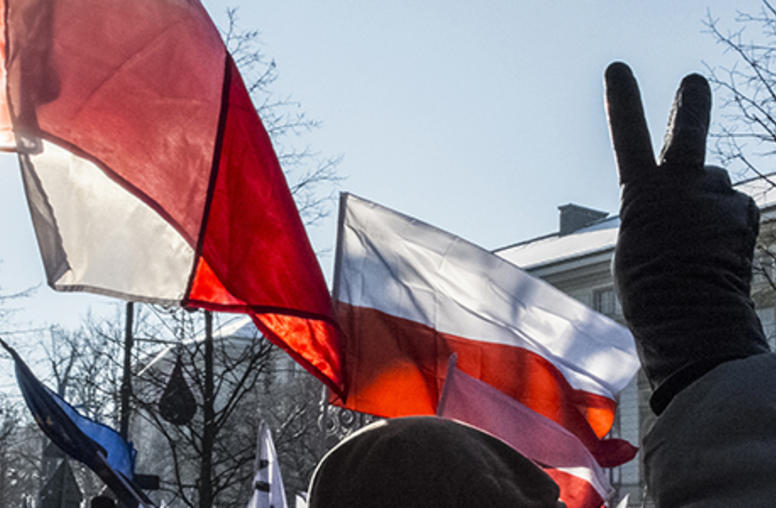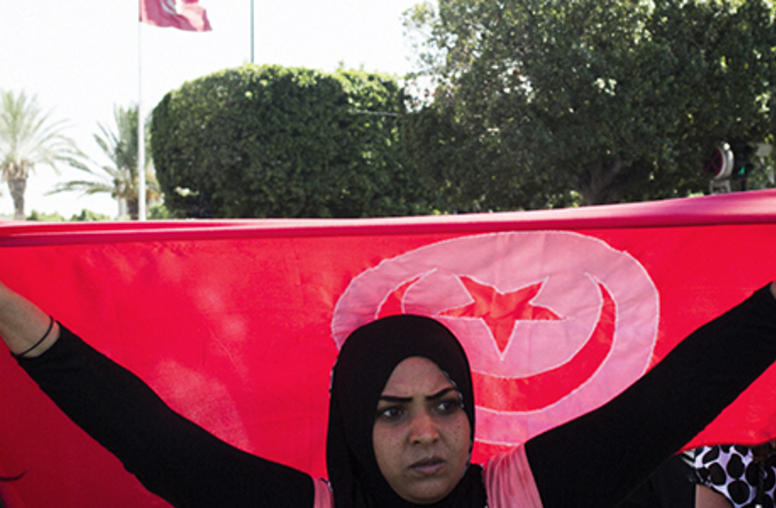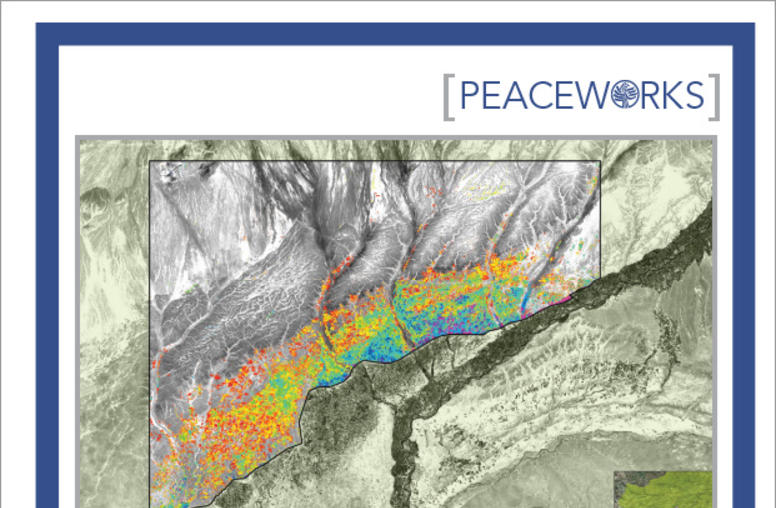Entrepreneurs Hunt for 'Peace Tech' to Defuse Conflict
When Ukrainian President Viktor Yanukovych fled the country in February in the face of massive protests in the capital Kyiv, major news media made only passing references to Crimea. But Georgetown University fellow Kalev Leetaru had a map tracking protests and incidents of violence. It showed Crimea "really lighting up."
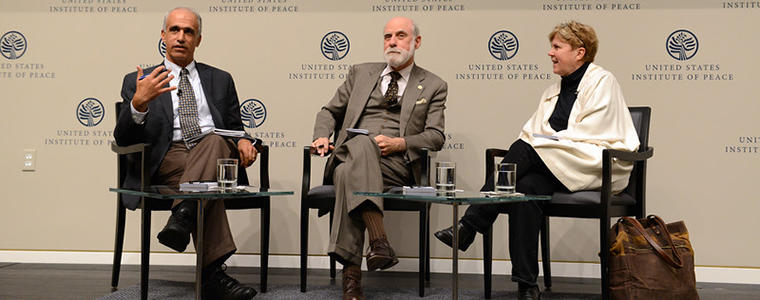
It was a harbinger of things to come. Technology like Leetaru's that might be used to predict, prevent or resolve violent conflict became the focus of a forum at the U.S. Institute of Peace recently that also featured a conversation billed as "Technologist Meets Peacebuilder" by Internet pioneer Vint Cerf and former U.N. and U.S. official Jane Holl Lute.
Leetaru's "Global Database of Society" or GDELT Project, scours broadcast, print and web news worldwide to identify people, events and other factors underlying global developments. In a "lightning round" of 13 technology presentations during the daylong "PeaceTech Summit" at USIP, Leetaru's project featured a map of earth that showed protests and incidents of violence every day for the past 35 years.
"You can actually watch in real time, through the eyes of all available open media, what's happening in a country, moment by moment," Leetaru told the audience at the Sept. 19 event, entitled "Engineering Durable Peace."
The PeaceTech Summit, co-hosted with the National Academy of Engineering, brought together corporate and government officials, engineers, technologists and civic activists to discuss how technology is being used in conflict zones. The event also marked the launch of USIP's PeaceTech Lab, a new organization dedicated to developing and deploying technologies, media and data for conflict management and peacebuilding.
The new PeaceTech Lab is designed to harness the power of collaboration across these disciplines, a place where engineers and technologists work daily with conflict and peacebuilding experts -- social scientists working with data scientists. The Lab will bring PeaceTech fellows from conflict zones and university engineering programs, as well as from the private sector. Their insights on issues such as data-driven decision-making and distribution of new tools will be vital.
"The Lab's success" said Himelfarb, "will be measured in developing new ways for peace tech to have a demonstrable impact on mitigating violence, and in attracting significantly greater resources with which to scale these solutions. We have an opportunity here to inspire a global peace tech industry and want to seize the moment."
Among other technology ventures presented at the Sept. 19 Summit, Rachel Brown, who founded the organization Sisi Ni Amani, outlined a cell phone text project to convey messages of peace and tolerance to prevent the recurrence of election violence in Kenya. Anahi Ayala Iacucci of California-based Internews sketched out a project that sought to shift the conversation in the recent Gaza conflict to create "white spaces" for discussion of humanitarian needs beyond disputes over identity or politics.
More strategic peacebuilding
"Our world is ablaze with serious conflicts playing out virtually all over the globe," said Stephen J. Hadley, a former U.S. national security advisor who is chairman of USIP's board of directors, which approved the formation of the PeaceTech Lab in July. "It is also being transformed by the spread of cell phones and social media, the strategic positioning of networks and data and the growing competition between those who would exploit these media to empower people and advance freedom and those who would use them to oppress people and to maintain state control." Such technology needs to be integrated into every peacebuilding endeavor, Hadley said.
"We cannot prevent or reduce deadly conflict or construct durable institutions of peace in the 21st Century without enlisting these new technologies," he said. USIP has worked for years with the National Academy of Engineering to refine such an approach.
"We in peacebuilding have much to learn from their unrelenting drive for solutions to complex problems," Himelfarb said.
In 2011, the two organizations formed the Roundtable on Technology, Science and Peacebuilding, an alliance of government agencies, corporations, international organization, non-governmental organizations and academic leaders pursuing technology applications that can prevent, mitigate and resolve violent conflict and foster inclusive societies and community involvement.
"The objective of this collaboration is to help make peacebuilding a more strategic, systematic and technical enterprise, in keeping with the human core of the problems that we address," said Dan Mote, president of the National Academy. "After all, engineering solutions serve people."
Ovidiu Bujorean, a senior program manager for innovation and entrepreneurship at CRDF Global, cited the explosive growth of online education and the opportunities it provides for educating restless young people around the world.
"They no longer have the patience to wait for their government to solve their problems," Bujorean told the Summit audience.
One of those challenges is creating jobs, and one mechanism for doing so is to encourage and support peaceful livelihoods in stressed economies.
U.S. Science Envoy Bernard Amadei, founder of Engineers Without Borders, said that means entrepreneurship that "is respectful of cultures, respectful of society, that promotes equitability and stability and also that provides long-term benefits to various constituents and to society in general."
Signs of armed conflict
In Pakistan, for instance, two-thirds of the population of 190 million, or 120 million people, make less than $2 a day. Pakistanis under the age of 30 also make up two-thirds of the population. The international community needs to find ways to capitalize on their passion and vision to promote creative entrepreneurship, Amadei said.
The Defense Department also is looking at ways to use data to detect the signs of armed conflict before it begins, said Alan Shaffer, the principal deputy assistant secretary of defense for research and engineering.
"There's an amazing correlation between the transnational criminal organizations and transnational terrorist organizations, and they feed off each other," Shaffer said. Another DoD project studies the role of energy and environmental disruption as a precursor to armed conflict, he said.
Cerf, who co-wrote the first specifications for the Internet in 1974 and now works at Google with the title of "chief internet evangelist," said endeavors to solve complex problems such as addressing violent conflict "just take time."
"You can't solve these kinds of problems – peacebuilding, peacemaking, creation of peace, the conditions under which peace can be maintained or even created – without understanding what the origins of conflict are," Cerf said. Oftentimes disputes revolve around resources, ideology and power, and the stress between abundance and scarcity. "Understanding the origins of conflict is essential to figuring out if there's a way to defuse the conflict."
Lute questioned that belief. She cited the example of her children who had often tried to explain why they were arguing. She said she generally replied, "I don't care why you are fighting. Stop."
Still, the "global cyber awakening" has tremendous ramifications for the relationship between people and their governments, said Lute, president and chief executive officer of the Council on CyberSecurity. She most recently served as deputy secretary for the Department of Homeland Security. In 1996, the number of people online worldwide totaled about 15 million or 16 million, she said. Today the number is about 3 billion, and the next 3 billion won't take nearly as long to join the fray.
"We are connected to each other and to ideas and to possibilities and to power in ways we were never before," said Lute, who previously served as an assistant secretary-general of the United Nations responsible for on-the-ground support of UN peace operations, including rapid-response efforts. "We like it, and we want more."
At the same time, the world is seeing "the near-total collapse of trust in public-sector institutions." The result is "a great deal of anger," she said.
But there are "ways to ward off paths towards violence," Lute said. The "toxic cocktail" of factors can – and must -- be spotted in advance and diluted to prevent the kinds of explosions that too frequently rock the world. "It's not this inexorable march."
